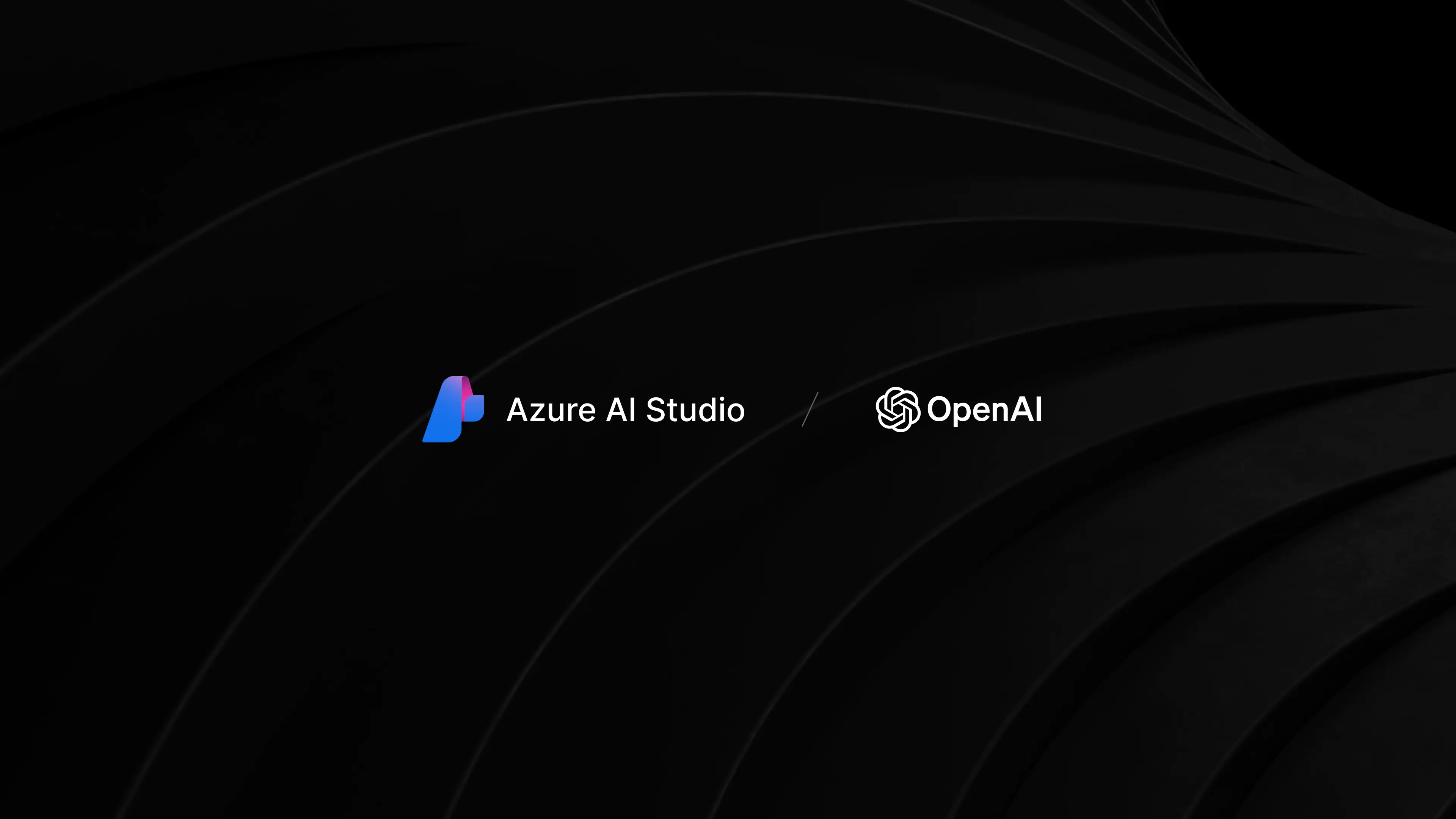9 July 2024 (updated: 9 July 2024)
Why Use Node JS? The Ultimate Guide
Chapters

Learn why Node.js has become a go-to choice for both beginner and experienced developers around the globe.
In the ever-evolving landscape of web development, one technology that has consistently stood out is Node.js. As an open-source, server-side runtime environment, Node.js has garnered a significant following thanks to its efficiency and versatility.
But why use Node.js? Whether you’re a beginner just starting out or an expert looking to optimize your projects, understanding the benefits and applications of Node.js can provide you with a robust foundation for building scalable and high-performance applications. In this guide, we will dive into the reasons why Node.js has become a go-to choice for developers around the globe, highlighting its practical advantages in building real-time apps, APIs, single-page applications, dynamic websites, and microservices.
Introduction to Node.js
What is Node.js? Understanding the Runtime Environment
Node.js is a powerful, open-source, server-side runtime environment built on Chrome’s V8 JavaScript engine. Unlike traditional server-side languages, Node.js allows developers to use JavaScript for both front-end and back-end development, creating a more unified and streamlined development process.
Launched in 2009, Node.js has quickly become popular due to its non-blocking, event-driven architecture, which makes it highly efficient and capable of handling multiple concurrent connections simultaneously. This makes it particularly suitable for building scalable network applications, real-time web applications, and microservices. By using Node.js, developers can write server-side code in JavaScript, the same language used for client-side scripting, simplifying the development process and reducing the learning curve. So, why use Node.js? Its unique features and capabilities make it a versatile choice for a wide range of applications.
History of Node.js
Node.js was created by Ryan Dahl in 2009, aiming to provide an efficient way to build scalable network applications. Before Node.js, JavaScript was primarily confined to client-side scripting within web browsers. Dahl’s vision was to bring JavaScript to the server side, leveraging the asynchronous, non-blocking nature of the language to handle multiple connections efficiently. The first release of Node.js included an HTTP server library, which laid the foundation for developing web servers and applications.
Over the years, the Node.js community has grown substantially, contributing to its ecosystem and expanding its capabilities. This growth has also seen the rise of various JS frameworks, including popular Node.js frameworks like Express and Meteor, which are favored by both experienced and junior engineers. Major milestones include the introduction of the npm (Node Package Manager) in 2010, which simplified the sharing and management of code packages, and the establishment of the Node.js Foundation in 2015 to foster collaboration and ensure the project’s long-term success. Today, Node.js is maintained by the OpenJS Foundation and continues to evolve, driven by an active and passionate community.
Why Use Node.js?
So, why use Node.js? Its non-blocking, event-driven architecture makes it an ideal choice for handling multiple concurrent requests, which is crucial for real-time applications like chat apps and online gaming. Node.js allows developers to use JavaScript across the entire stack, streamlining the development process and reducing the need for context-switching between languages. This improves productivity and makes it easier to maintain code.
Additionally, Node.js has a vibrant ecosystem, with npm offering a wealth of open-source libraries and modules that can expedite development. Its performance, scalability, and flexibility make it suitable for a variety of applications, from simple scripts to complex enterprise-level systems.
Companies like Netflix, LinkedIn, and Walmart use Node.js for its efficiency and ability to handle high-traffic loads. Ultimately, Node.js provides a robust platform for developers looking to build fast, scalable, and efficient network applications.
Key Features of Node.js
Event-Driven Architecture and Event Loop
One of the standout features of Node.js is its event-driven architecture. Unlike traditional server-side environments that follow a multi-threaded approach, Node.js operates on a single-threaded event loop, which efficiently manages incoming requests.
This design enables non-blocking I/O operations, meaning the server can handle multiple connections simultaneously without being bogged down by slow processes. When an event occurs, such as a user request, Node.js places it in an event queue and continues executing other tasks. Once the event is ready to be processed, the event loop picks it up, ensuring efficient resource utilization and faster response times. This architecture is particularly beneficial for real-time applications like chat systems, live streaming, and online games, where rapid and simultaneous data exchange is crucial.
Overall, Node.js’s event-driven model provides a scalable and efficient framework for handling high-traffic loads and complex, interactive applications.
Non-Blocking I/O
Node.js’s non-blocking I/O is a game-changer in web development. Traditional server environments often use blocking I/O, where each request must wait for the previous one’s processing to complete. This can lead to inefficiencies and slower response times.
In contrast, Node.js employs non-blocking I/O, allowing the server to handle multiple concurrent requests efficiently without waiting for previous tasks to finish. When a request is made, Node.js initiates the I/O operation and immediately moves on to handle other tasks. Once the I/O operation completes, a callback function is executed to process the result.
This approach drastically improves performance and scalability, making it ideal for applications that require high concurrency, such as APIs, streaming services, and real-time communication tools. By avoiding bottlenecks and maximizing resource utilization, Node.js ensures that applications remain responsive and efficient, even under heavy load.
Single Programming Language
One of the compelling reasons why use Node.js is its ability to allow developers to use a single programming language across the entire development stack. With Node.js, you can write both client-side and server-side code in JavaScript. This uniformity simplifies the development process, reducing the need for context switching between different languages and making it easier to manage and maintain codebases.
For teams, this means more seamless collaboration, as all members can work with the same language and share expertise more effectively. Additionally, using a single language can speed up the development cycle, as code can often be reused between the front end and back end.
This feature not only enhances productivity but also makes Node.js an attractive option for full-stack development. Ultimately, Node.js’s use of a single programming language streamlines development workflows, making it a practical choice for a range of applications.
Benefits for Beginners
Easy Learning Curve
Node.js offers an easy learning curve, making it an excellent choice for beginners in web development. Since Node.js uses JavaScript, a language that many developers are already familiar with, transitioning to server-side development becomes less daunting. Beginners can leverage their existing knowledge of JavaScript, eliminating the need to learn a new language from scratch.
Moreover, Node.js has a vast and active community that provides a wealth of tutorials, documentation, and open-source projects. These resources make it easier for newcomers to find guidance and support as they learn. The simplicity and readability of JavaScript code make it accessible for beginners to understand and write effective server-side scripts. With its straightforward syntax and extensive ecosystem, Node.js provides a supportive environment that encourages learning and experimentation, helping beginners quickly gain confidence and proficiency in full-stack development.
Strong Community Support
One of the significant advantages of using Node.js, especially for beginners, is its strong community support. Node.js boasts a large, active, and passionate community that continuously contributes to its ecosystem. This community-driven approach ensures a wealth of resources, including extensive documentation, tutorials, forums, and open-source libraries, all readily available to help newcomers.
When encountering challenges or seeking best practices, beginners can quickly turn to platforms like Stack Overflow, GitHub, and various Node.js forums for guidance and solutions. The community also organizes regular meetups, conferences, and online webinars, providing opportunities for networking and learning from experienced developers.
The robust support network not only helps beginners overcome obstacles more efficiently but also fosters a collaborative environment where knowledge and experiences are shared. In essence, the strong community support surrounding Node.js makes it easier for beginners to learn, troubleshoot, and grow their skills in web development.
Abundance of Learning Resources for Web Development
Node.js offers an abundance of learning resources, making it an ideal platform for beginners. From comprehensive official documentation to a plethora of online tutorials, blogs, and video courses, there's no shortage of material to help new developers get up to speed.
Websites like freeCodeCamp, Codecademy, and Udemy provide structured courses specifically tailored to Node.js, covering everything from basic concepts to advanced techniques. Additionally, numerous books and eBooks are available, offering in-depth insights and practical examples. Open-source projects on GitHub also serve as valuable learning tools, allowing beginners to explore real-world applications and contribute to collaborative coding efforts.
The array of resources ensures that learners have multiple avenues to gain knowledge, practice their skills, and seek help when needed. As a result, the amount of learning resources available for Node.js makes it easier for beginners to achieve proficiency and confidence in server-side development.
Advantages for Experts
High Performance
Node.js is renowned for its high performance, making it a top choice for experts seeking to build efficient applications. Powered by Chrome's V8 JavaScript engine, Node.js compiles JavaScript directly into machine code, resulting in faster execution. Its non-blocking I/O and event-driven architecture further enhance performance by allowing the server to handle multiple requests concurrently without waiting for previous tasks to complete.
This design minimizes latency and maximizes throughput, making Node.js highly efficient for real-time applications like chat apps, online gaming, and collaborative tools. Additionally, Node.js’s lightweight nature and low memory usage contribute to its high performance, ensuring that applications run smoothly even under heavy traffic.
For experts looking to optimize resource-intensive tasks and build scalable systems, Node.js offers the performance capabilities needed to meet demanding requirements. In essence, Node.js's high performance makes it a robust and reliable choice for developing high-traffic, real-time applications.
Scalability and Flexibility
Node.js offers exceptional scalability and flexibility, making it an attractive option for experts aiming to build robust, large-scale applications. Its non-blocking, event-driven architecture allows for efficient handling of numerous simultaneous connections, which is crucial for applications expecting high traffic.
Node.js facilitates horizontal scaling, enabling the addition of multiple nodes to manage increased loads. Additionally, it supports microservices architecture, allowing developers to split applications into smaller, manageable services that can be developed, deployed, and scaled independently. This modularity enhances flexibility and makes it easier to maintain and upgrade applications over time.
Furthermore, Node.js's compatibility with a wide range of databases and its extensive ecosystem of modules and libraries provide developers with the tools needed to tailor solutions to specific requirements. In summary, Node.js's scalability and flexibility enable experts to build efficient, high-performance applications capable of adapting to evolving demands and growth.
Full-Stack Development
Node.js is a powerful enabler of full-stack development, offering experts the ability to use JavaScript across both the client and server sides. This unified approach simplifies the development process, as developers can work with a single language, reducing context switching and enhancing code consistency. Full-stack development with Node.js allows for better collaboration within development teams, as members can easily share knowledge and expertise.
Node.js’s ecosystem includes frameworks like Express.js for server-side development and libraries such as React or Angular for the front end, providing comprehensive tools to build full-stack applications. This seamless integration between front-end and back-end components streamlines the development workflow and accelerates project timelines. For experts, the ability to leverage JavaScript throughout the entire stack not only boosts productivity but also facilitates the creation of more cohesive and maintainable applications. Ultimately, Node.js’s support for full-stack development makes it a versatile and efficient choice for building modern web applications.
Real-World Use Cases
Popular Companies Using Node.js
Many high-profile companies have adopted Node.js, leveraging its performance and scalability for their applications. Netflix, the world's leading streaming service, uses Node.js to handle massive amounts of data and deliver a seamless viewing experience to millions of users.
 Source: Netflix
Source: Netflix
LinkedIn also switched to Node.js for its mobile backend, resulting in a significant performance boost and reduced server resource usage. Walmart, one of the largest retail chains globally, employs Node.js to handle its online traffic, ensuring a fast and reliable shopping experience for customers.
Another notable example is PayPal, which uses Node.js for its web applications, benefiting from its unified JavaScript environment for both client and server sides. These companies, among many others, demonstrate the effectiveness of Node.js in building scalable, high-performance applications capable of handling substantial traffic and data loads. Their success stories highlight why using Node.js is a compelling choice for businesses aiming to optimize their digital operations.
Common Applications of Node.js
Node.js is highly versatile, making it suitable for a wide range of applications. One of the most common uses is in building real-time web applications, such as chat applications and live streaming services, due to its event-driven architecture and non-blocking I/O. Additionally, Node.js is ideal for developing RESTful APIs and microservices, enabling efficient communication between various parts of an application.
E-commerce websites and online marketplaces also benefit from Node.js’s scalability and performance, ensuring a seamless shopping experience even under high traffic. Furthermore, Node.js is frequently used in developing single-page applications (SPAs) with frameworks like React or Angular, providing a smooth and responsive user experience.
IoT (Internet of Things) applications also leverage Node.js for managing numerous simultaneous connections and processing data in real time. Overall, Node.js's flexibility and efficiency make it a popular choice for a diverse array of applications, from web development to IoT solutions.
Future Trends in Node.js Development
The future of Node.js development looks promising with several emerging trends set to shape its evolution. One significant trend is the increasing adoption of serverless architecture, where developers can build and deploy applications without managing server infrastructure.
Node.js’s lightweight and modular nature makes it a perfect fit for serverless functions on platforms like AWS Lambda and Google Cloud Functions. Another trend is the growing use of TypeScript, a statically typed superset of JavaScript, which enhances code quality and maintainability in large-scale Node.js applications. Additionally, advancements in artificial intelligence and machine learning are leading developers to integrate these technologies into Node.js applications, enabling smarter, more dynamic functionalities.
The focus on security is also intensifying, with the community continually working on improving security features and best practices. As these trends gain momentum, Node.js will continue to adapt, offering developers innovative tools and capabilities to build next-generation applications.
Check out also:
- Top 10 Automated Software Testing Tools - Find the best automated software testing tool to speed up your testing process.
- Git 101 - An Absolute Must-have For Every Developer - Git is a fundamental part of the workflow, but knowing how to get the most out of it is often the Achilles' heel even for experienced developers.
You may also like

Leveraging Isolated Environments in Azure for Secure AI Model Usage
21 November 2024 • Mariusz Heyda






